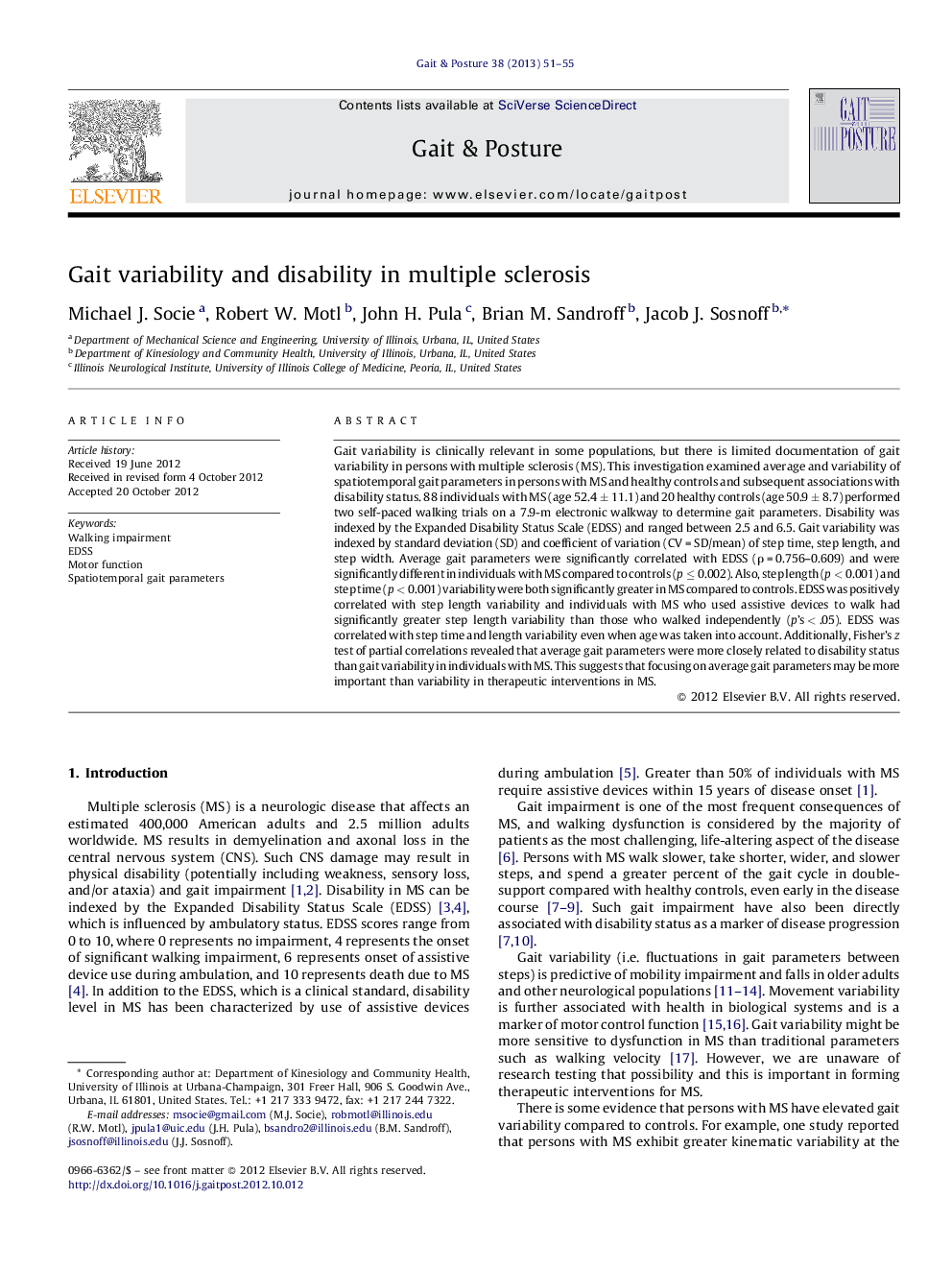| Article ID | Journal | Published Year | Pages | File Type |
|---|---|---|---|---|
| 6207490 | Gait & Posture | 2013 | 5 Pages |
Gait variability is clinically relevant in some populations, but there is limited documentation of gait variability in persons with multiple sclerosis (MS). This investigation examined average and variability of spatiotemporal gait parameters in persons with MS and healthy controls and subsequent associations with disability status. 88 individuals with MS (age 52.4 ± 11.1) and 20 healthy controls (age 50.9 ± 8.7) performed two self-paced walking trials on a 7.9-m electronic walkway to determine gait parameters. Disability was indexed by the Expanded Disability Status Scale (EDSS) and ranged between 2.5 and 6.5. Gait variability was indexed by standard deviation (SD) and coefficient of variation (CV = SD/mean) of step time, step length, and step width. Average gait parameters were significantly correlated with EDSS (Ï = 0.756-0.609) and were significantly different in individuals with MS compared to controls (p â¤Â 0.002). Also, step length (p < 0.001) and step time (p < 0.001) variability were both significantly greater in MS compared to controls. EDSS was positively correlated with step length variability and individuals with MS who used assistive devices to walk had significantly greater step length variability than those who walked independently (p's < .05). EDSS was correlated with step time and length variability even when age was taken into account. Additionally, Fisher's z test of partial correlations revealed that average gait parameters were more closely related to disability status than gait variability in individuals with MS. This suggests that focusing on average gait parameters may be more important than variability in therapeutic interventions in MS.
⺠Persons with multiple Sclerosis have greater gait variability than controls. ⺠Gait variability is associated with disability in persons with multiple sclerosis. ⺠Average spatiotemporal gait parameters are more closely related to disability than variability metrics.
